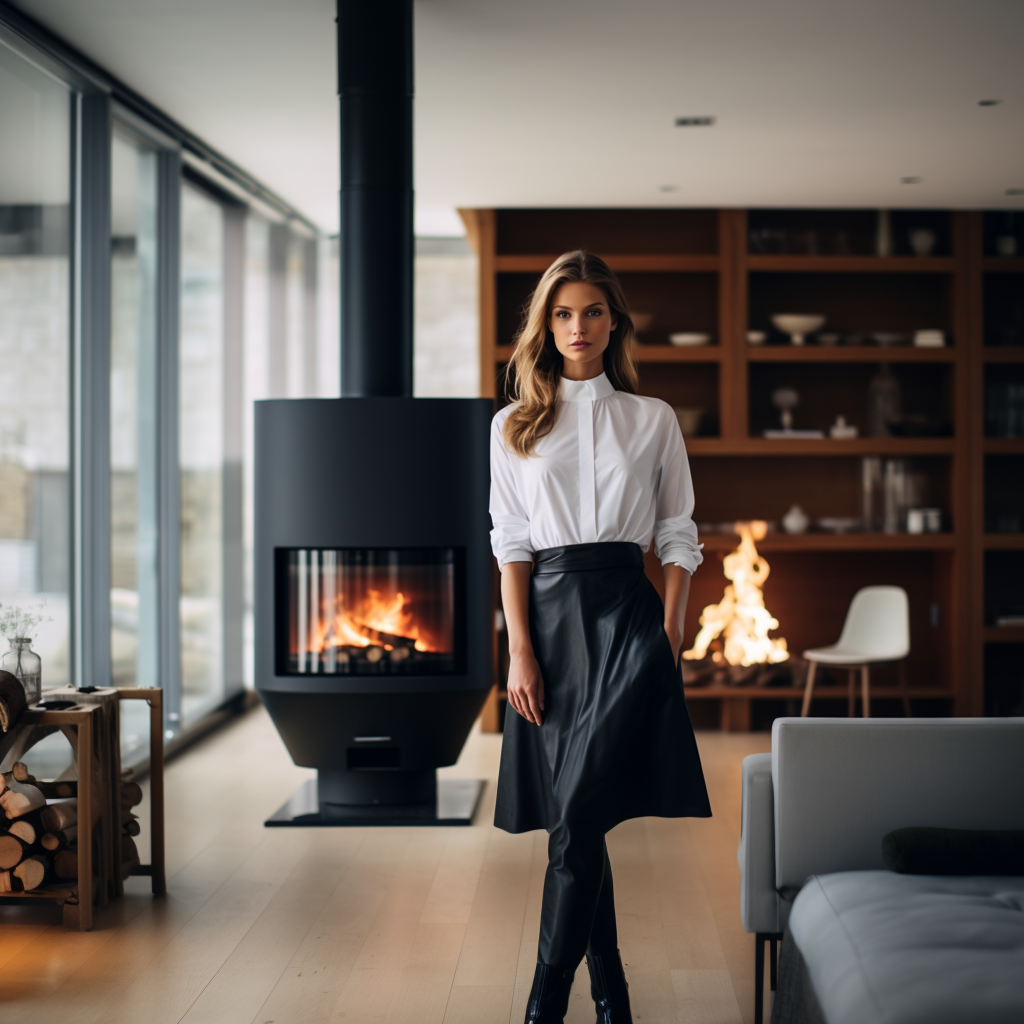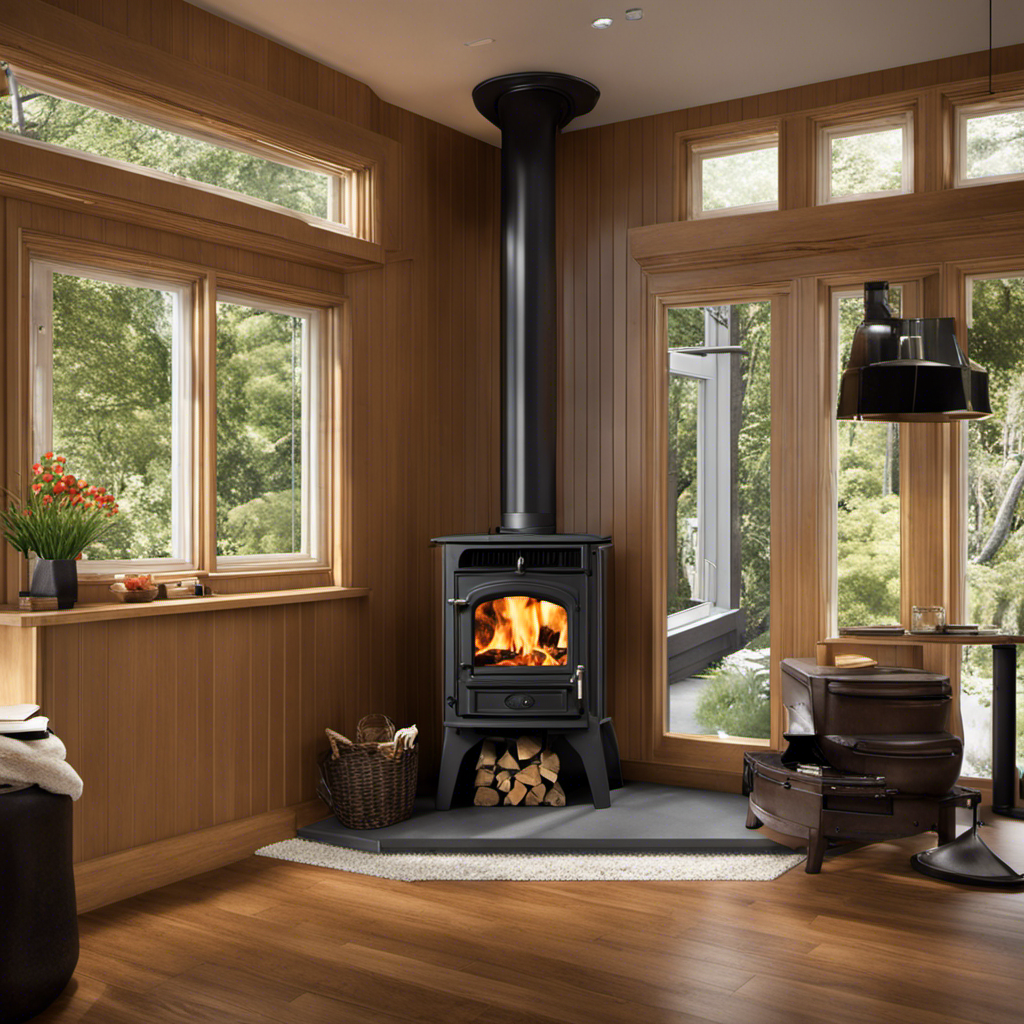With extensive experience using wood stoves, I understand the significance of determining the best burning temperature. It is intriguing to observe how something as basic as temperature can greatly impact efficiency and safety.
In this article, I will share my knowledge on the optimal temperature range for wood stove burning, factors that affect temperature, and how to achieve and maintain a consistent burn. Plus, I’ll provide some valuable safety precautions along the way.
Let’s get burning!
Key Takeaways
- The optimal temperature range for wood stove burning is between 500 and 900 degrees Fahrenheit.
- Achieving and maintaining a consistent burn temperature is crucial for safety and efficiency.
- Signs of an overheated wood stove include intense heat radiating from the stove and a strong smell of burning.
- Proper maintenance, ventilation, and temperature control optimize efficiency and reduce the risk of fire hazards.
The Optimal Temperature Range for Wood Stove Burning
I find that the optimal temperature range for wood stove burning is between 500 and 900 degrees Fahrenheit. It’s crucial to have proper ventilation when using a wood stove, as it helps in maintaining the desired temperature range. Without adequate airflow, the temperature might drop below the optimal range, leading to incomplete combustion and the production of harmful pollutants.
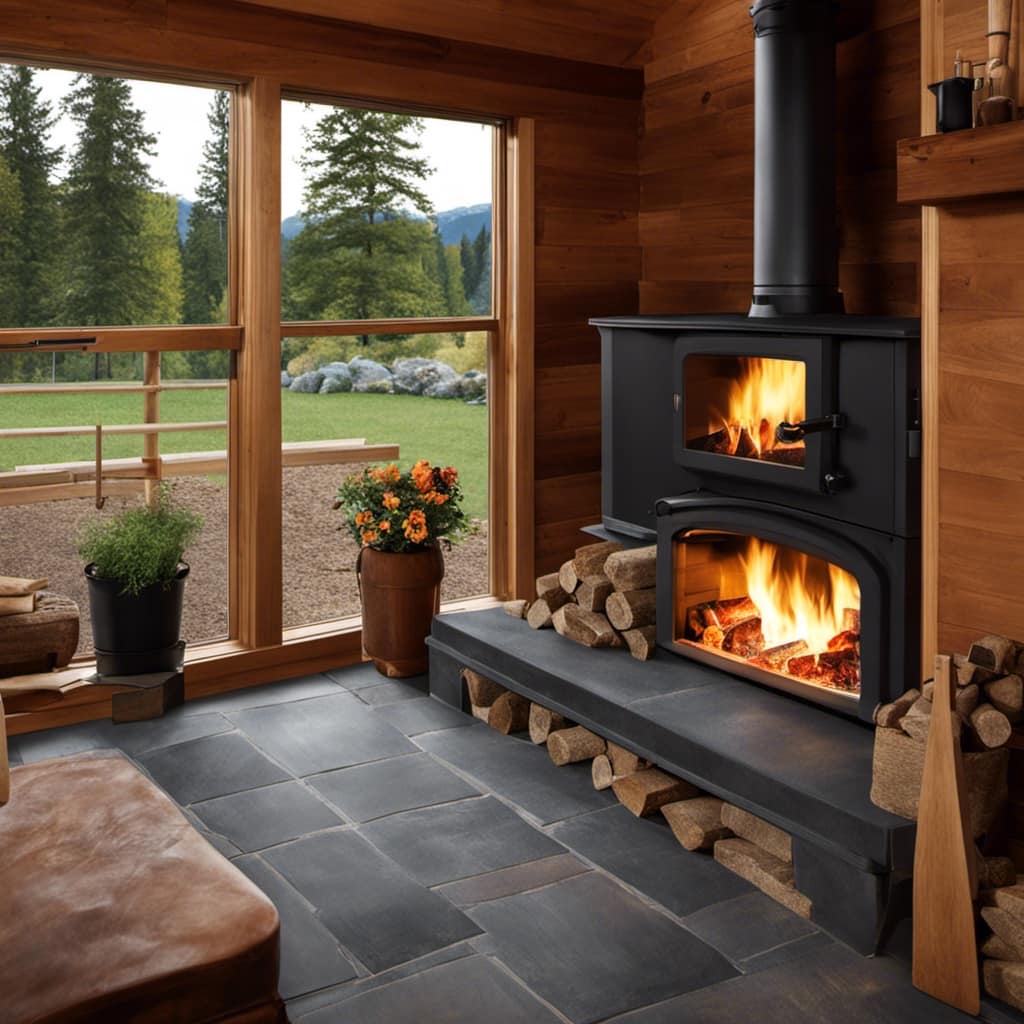
Additionally, understanding the impact of moisture content on wood stove temperature is essential. Wet or green wood contains a significant amount of moisture, which can make it difficult to achieve and maintain the desired temperature. The moisture in the wood needs to evaporate before the wood can start to burn efficiently and produce the desired heat.
Transitioning to the subsequent section, let’s explore the various factors that can affect wood stove temperature.
Factors Affecting Wood Stove Temperature
One factor that affects the temperature of my wood stove is the type of fuel I use. The efficiency of the wood stove plays a crucial role in determining how hot it can burn. A well-designed and properly maintained wood stove can achieve high levels of efficiency, ensuring that more heat is generated from the fuel. This means that the stove can reach higher temperatures and provide more warmth for my home.
The environmental impact of wood stove temperature is also an important consideration. Burning wood at a higher temperature can result in more complete combustion, reducing the amount of smoke and pollutants released into the air. This is beneficial for both air quality and the environment. Additionally, a hotter wood stove can help to minimize creosote buildup in the chimney, reducing the risk of chimney fires.
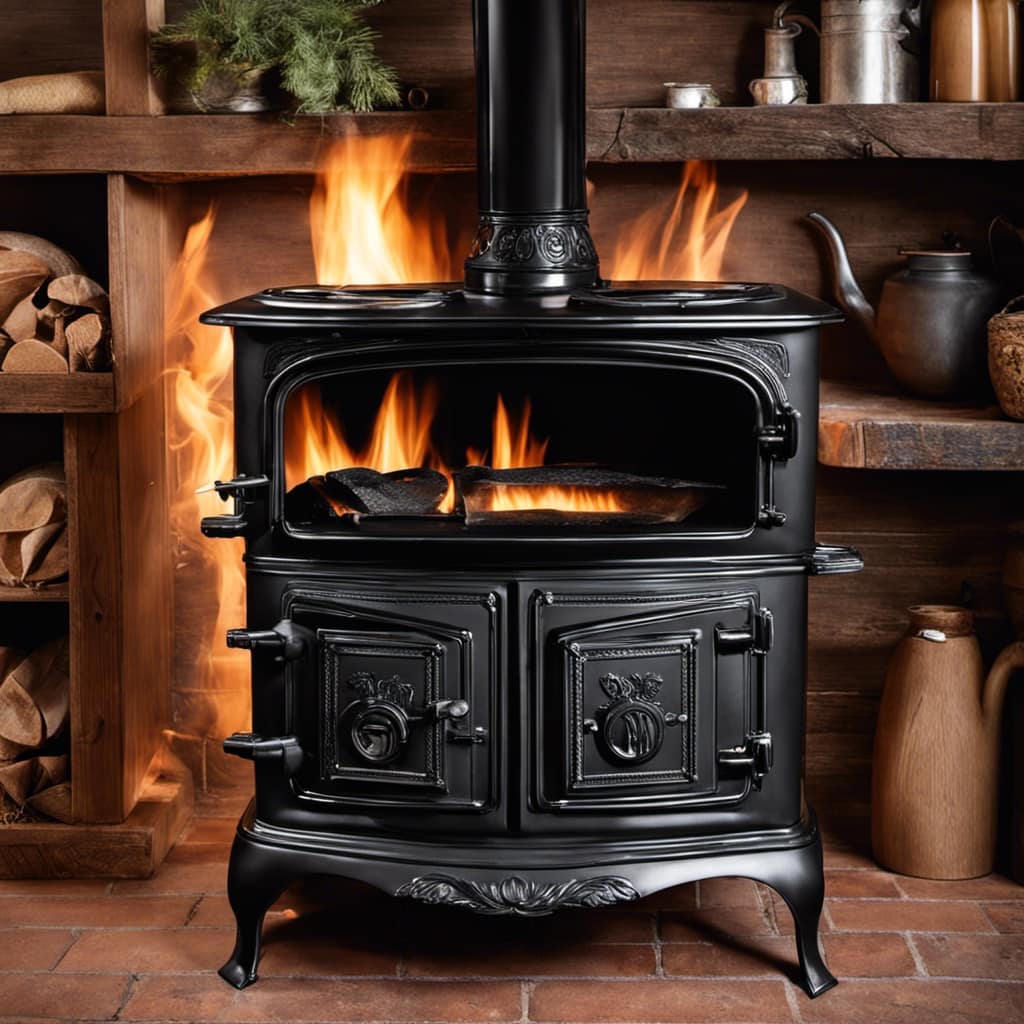
Signs of an Overheated Wood Stove
Experiencing intense heat radiating from the device and noticing a strong smell of burning are clear indications that my wood stove is overheating. These warning signs should never be ignored, as an overheated wood stove can pose serious safety risks. Not only can it damage the stove itself, but it can also lead to a fire hazard in your home.
To prevent overheating, it’s crucial to properly maintain your wood stove and follow recommended guidelines. Regularly cleaning the stove and chimney, using the right type and size of wood, and ensuring proper air flow are essential steps in preventing overheating.
By being cautious and proactive, you can enjoy the warmth and efficiency of your wood stove without the worry of overheating.
Now, let’s explore how to achieve and maintain a consistent burn temperature.
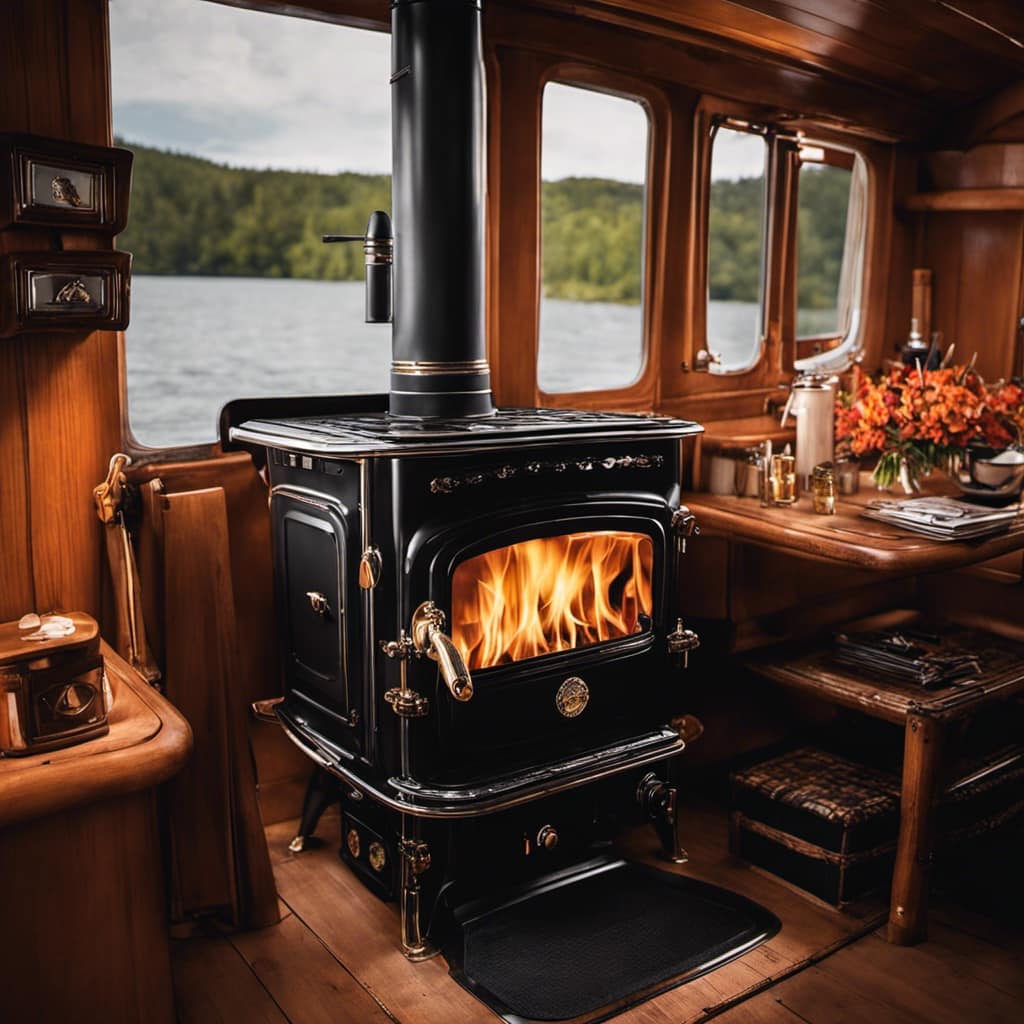
How to Achieve and Maintain a Consistent Burn Temperature
To keep the temperature steady, it’s important to monitor the airflow and adjust the damper accordingly. Achieving efficient combustion in a wood stove is essential for both safety and efficiency. Here are some tips on how to achieve and maintain a consistent burn temperature:
Adjust the damper: By controlling the amount of air entering the stove, you can regulate the burn intensity. Closing the damper will reduce the airflow and slow down the burn, while opening it will increase the airflow and raise the temperature.
Use smaller pieces of wood: Burning smaller pieces of wood allows for more efficient combustion, as they can burn more evenly and produce a higher temperature.
Maintain proper ventilation: Good ventilation ensures proper airflow, which is crucial for achieving efficient combustion. Make sure the air vents are clean and open to allow for adequate oxygen supply.
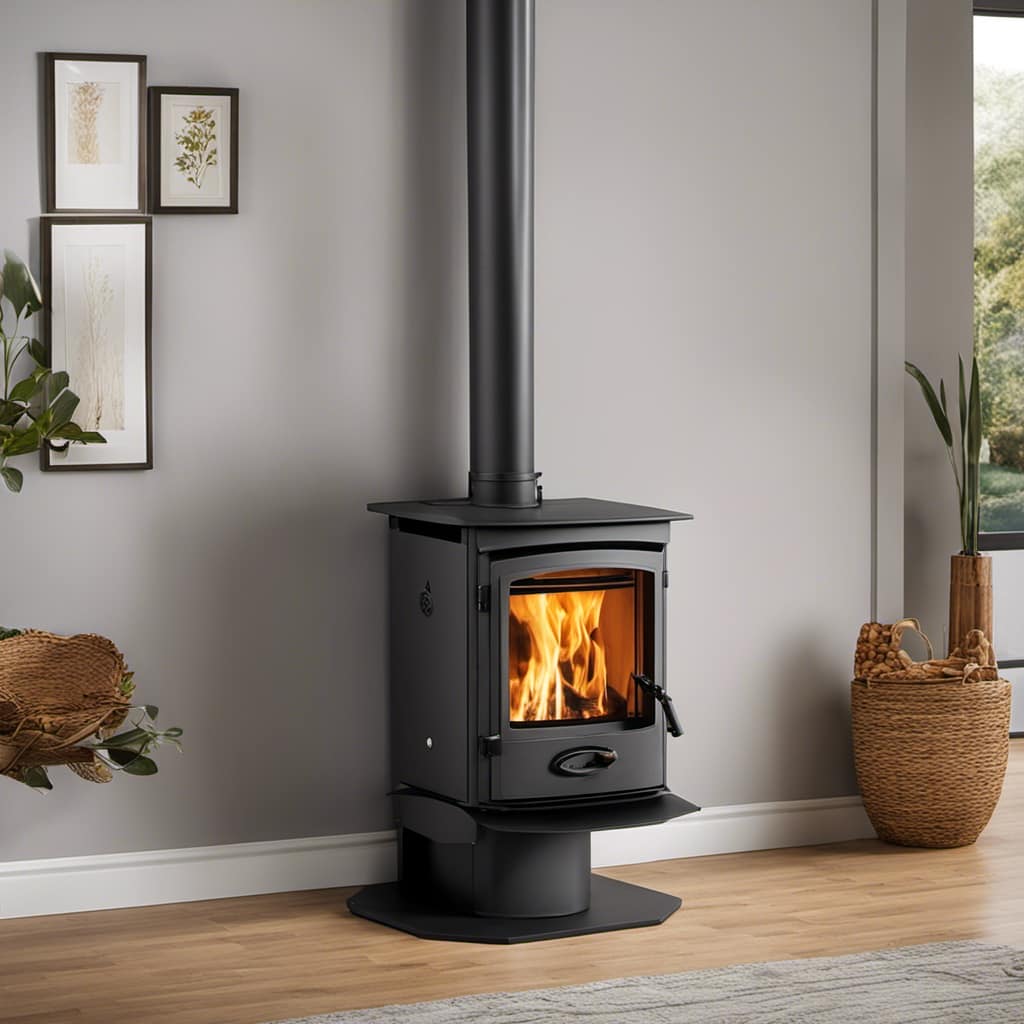
Safety Precautions for Controlling Wood Stove Heat Levels
I always make sure to follow proper safety precautions when controlling the heat levels in my wood stove. Fire safety is of utmost importance when it comes to using a wood stove. One of the key safety measures is ensuring proper ventilation. This helps to prevent the build-up of dangerous gases like carbon monoxide. To ensure that I maintain a safe environment, I regularly check the chimney for any blockages or creosote build-up. Additionally, I always keep a fire extinguisher nearby and have a clear path to exit in case of emergencies. By taking these precautions, I can enjoy the warmth and comfort of my wood stove while keeping my home and loved ones safe.
| Safety Precautions | Importance |
|---|---|
| Proper Ventilation | High |
| Regular Chimney Checks | Moderate |
| Fire Extinguisher | High |
| Clear Exit Path | High |
| Carbon Monoxide Detector | High |
Frequently Asked Questions
How Long Does It Take for a Wood Stove to Reach Its Optimal Temperature Range?
It takes a wood stove some time to reach its optimal temperature range. The burning duration can vary depending on factors like the size of the stove and the type of wood used. Temperature control is important for efficient and safe operation.
Can I Use Any Type of Wood in My Wood Stove?
I can use different types of wood in my wood stove, but it’s important to follow best practices. Using dry, seasoned wood and avoiding softwoods can help ensure a safe and efficient burn.
How Often Should I Clean My Wood Stove to Maintain Consistent Burn Temperature?
To maintain consistent burn temperature, it is crucial to clean my wood stove regularly. I am knowledgeable about the cleaning frequency required to achieve temperature consistency, and I approach this task with precision and caution.

Are There Any Specific Weather Conditions That Affect Wood Stove Temperature?
Weather conditions can impact the temperature range of a wood stove. Factors like outdoor temperature, wind, and humidity can affect how hot the stove burns. It’s important to monitor these conditions for optimal performance.
Can I Leave My Wood Stove Unattended While It Is Burning Within the Optimal Temperature Range?
Can I safely leave my wood stove unattended while it’s burning at the right temperature? While it’s generally not recommended to leave any fire unattended, maintaining optimal temperature control can reduce the risks associated with burning safety.
What Temperature Can Wood Stoves Reach When Burning?
Wood stove temperature levels can reach between 1100 and 1800 degrees Fahrenheit when burning. This high heat is necessary for efficient wood burning and heating. It’s important to consider these levels when selecting a wood stove and practicing safe usage and maintenance.
Conclusion
In conclusion, it’s crucial to maintain a careful and controlled burn temperature in your wood stove for optimal performance and safety.
By understanding the factors that affect temperature and closely monitoring your stove, you can avoid overheating and ensure a consistent burn.
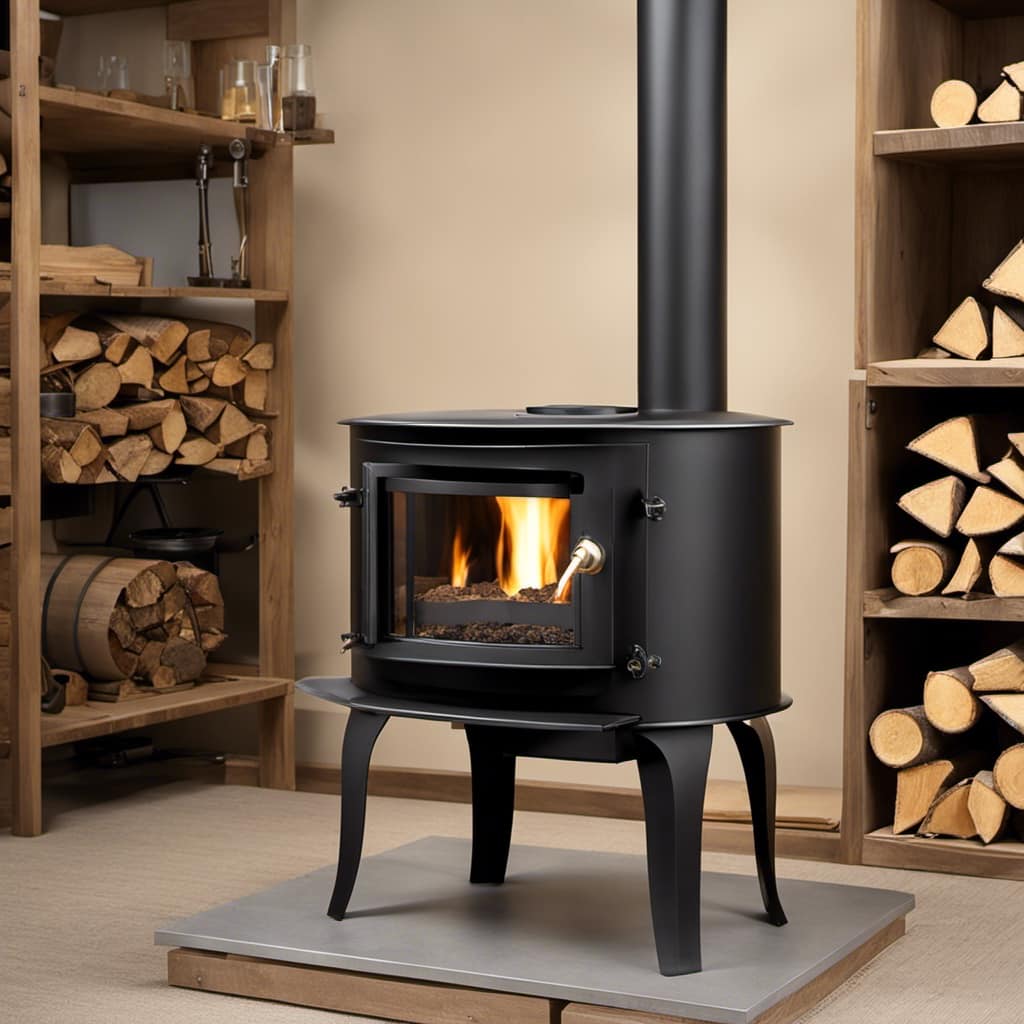
Remember to follow safety precautions and take necessary measures to control heat levels, ensuring a comfortable and efficient wood burning experience.
Growing up surrounded by the vast beauty of nature, Sierra was always drawn to the call of the wild. While others sought the comfort of the familiar, she ventured out, embracing the unpredictable and finding stories in the heartbeat of nature.
At the epicenter of every remarkable venture lies a dynamic team—a fusion of diverse talents, visions, and passions. The essence of Best Small Wood Stoves is crafted and refined by such a trio: Sierra, Logan, and Terra. Their collective expertise has transformed the platform into a leading authority on small wood stoves, radiating warmth and knowledge in equal measure.



